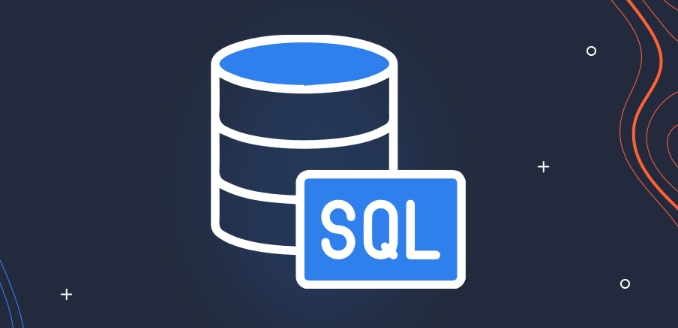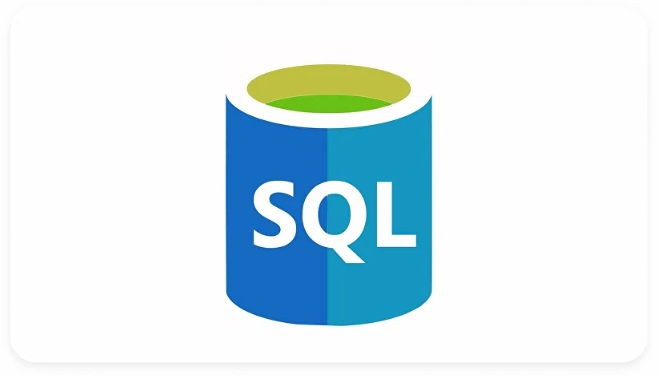 pangkalan data
pangkalan data
 SQL
SQL
 Data memindahkan data dengan cekap dengan Perkhidmatan Integrasi SQL Server (SSIS)
Data memindahkan data dengan cekap dengan Perkhidmatan Integrasi SQL Server (SSIS)
Data memindahkan data dengan cekap dengan Perkhidmatan Integrasi SQL Server (SSIS)
Sep 12, 2025 am 03:26 AMTo migrate data efficiently with SSIS, properly set up data sources and destinations by configuring OLE DB providers, using connection managers wisely, testing individual sources, and verifying data type mappings. Next, optimize data flow performance by using fast load options, adjusting batch sizes, avoiding unnecessary transformations, and utilizing fast drives for buffer storage. Finally, handle errors and logging effectively by redirecting error outputs, using selective logging for key events, and maintaining a custom logging table for auditing and troubleshooting purposes.

Migrating data efficiently with SQL Server Integration Services (SSIS) is something a lot of developers and DBAs deal with when moving or upgrading systems. SSIS gives you a solid framework for handling complex data flows, but knowing how to use it effectively makes all the difference — especially when dealing with large volumes or tight deadlines.

Set Up Your Data Sources and Destinations Properly
One of the most overlooked steps in SSIS is setting up your source and destination connections correctly. This might sound basic, but getting this right upfront can save you headaches later.
- Make sure your OLE DB providers are configured properly for each database.
- Use connection managers wisely — don’t hardcode server names or credentials unless absolutely necessary.
- If you're pulling from multiple sources (like Oracle, Excel, or flat files), test each one individually before combining them.
A common mistake is assuming that all data types will map automatically between systems. They often don't. Spend time checking how data types translate — for example, a VARCHAR(MAX) in SQL Server might not be compatible with what SSIS expects from a CSV file.

Optimize Data Flow Performance
The Data Flow Task is usually where most of the processing happens, so optimizing this part is key to fast migrations.
- Use fast load options when writing to SQL Server destinations. Enabling "Table or view – fast load" can drastically improve performance compared to row-by-row inserts.
- Batch size matters — tweak the "Rows per batch" and "Maximum insert commit size" settings. A good starting point is 10,000 rows per batch, but adjust based on your system's memory and disk I/O.
- Avoid unnecessary transformations — if you don’t need to modify data mid-flow, skip components like Derived Column or Data Conversion unless they’re essential.
Also, consider using buffer temp storage on a fast drive if your data flow uses a lot of in-memory operations, like sorts or lookups. This helps prevent bottlenecks during large transfers.

Handle Errors and Logging Like a Pro
No matter how clean your data looks, errors will happen. SSIS has built-in tools to help you catch and handle them without breaking the whole package.
- Enable error output redirection on your source or transformation components. This lets you log bad rows instead of failing the entire process.
- Use flat file or SQL Server logging to keep track of what’s happening during execution. You’ll thank yourself later when debugging issues or proving compliance.
- Consider adding a custom logging table to capture start/end times, row counts, and error messages. It makes auditing easier and helps spot trends over time.
One thing many people miss: logging too much can actually slow things down. Don’t log every single event unless you really need to. Stick to key events like OnError, OnWarning, and OnPostExecute for most packages.
That’s basically it. SSIS isn’t magic, but when used right, it can make data migration feel almost effortless. Just remember to plan ahead, test early, and optimize where it counts.
Atas ialah kandungan terperinci Data memindahkan data dengan cekap dengan Perkhidmatan Integrasi SQL Server (SSIS). Untuk maklumat lanjut, sila ikut artikel berkaitan lain di laman web China PHP!

Alat AI Hot

Undress AI Tool
Gambar buka pakaian secara percuma

Undresser.AI Undress
Apl berkuasa AI untuk mencipta foto bogel yang realistik

AI Clothes Remover
Alat AI dalam talian untuk mengeluarkan pakaian daripada foto.

Stock Market GPT
Penyelidikan pelaburan dikuasakan AI untuk keputusan yang lebih bijak

Artikel Panas

Alat panas

Notepad++7.3.1
Editor kod yang mudah digunakan dan percuma

SublimeText3 versi Cina
Versi Cina, sangat mudah digunakan

Hantar Studio 13.0.1
Persekitaran pembangunan bersepadu PHP yang berkuasa

Dreamweaver CS6
Alat pembangunan web visual

SublimeText3 versi Mac
Perisian penyuntingan kod peringkat Tuhan (SublimeText3)
 Bagaimana untuk menambah komen ke meja atau lajur dalam SQL?
Sep 21, 2025 am 05:22 AM
Bagaimana untuk menambah komen ke meja atau lajur dalam SQL?
Sep 21, 2025 am 05:22 AM
UseCOMMENTONCOLUMNorALTERTABLEwithCOMMENTtodocumenttablesandcolumnsinSQL;syntaxvariesbyDBMS—PostgreSQLandOracleuseCOMMENTON,MySQLusesCOMMENTinCREATE/ALTERstatements,andcommentscanbeviewedviasystemtableslikeINFORMATION_SCHEMA,butSQLitelackssupport.
 Bagaimana cara menggunakan fungsi Soundex untuk carian fonetik dalam SQL?
Sep 21, 2025 am 01:54 AM
Bagaimana cara menggunakan fungsi Soundex untuk carian fonetik dalam SQL?
Sep 21, 2025 am 01:54 AM
Fungsi Soundex menukarkan teks ke dalam kod empat aksara yang mewakili sebutan, menambah tiga digit ke huruf pertama, mengabaikan huruf vokal dan huruf tertentu, dan peta konsonan dengan sebutan yang sama dengan nombor yang sama, merealisasikan carian berasaskan sebutan. Sebagai contoh, Smith dan Smythe kedua -duanya menjana S530, dan nama -nama dengan sebutan yang sama boleh didapati melalui wheresoundex (last_name) = soundex ('smith'). Digabungkan dengan fungsi perbezaan, ia boleh mengembalikan skor kesamaan 0 hingga 4, menapis hasil sebutan yang ditutup, yang sesuai untuk menangani perbezaan ejaan, tetapi mempunyai kesan terhad pada nama bukan bahasa Inggeris, dan pengoptimuman prestasi perlu diberi perhatian.
 Bagaimana untuk mendapatkan ID dimasukkan terakhir dalam SQL?
Sep 20, 2025 am 04:40 AM
Bagaimana untuk mendapatkan ID dimasukkan terakhir dalam SQL?
Sep 20, 2025 am 04:40 AM
Togetthelastinsertedid, digunakan-specificfunctions: mysqluseslast_insert_id (), postgresqlusesReturningclause, sqlserverusesscope_identity () oroutput, andsqliteuseslast_insert_rowid ();
 Bagaimana untuk menambah kekangan yang unik ke lajur SQL?
Sep 24, 2025 am 04:27 AM
Bagaimana untuk menambah kekangan yang unik ke lajur SQL?
Sep 24, 2025 am 04:27 AM
Apabila menggunakan createtable, tambahkan kata kunci yang unik atau gunakan altertableaddconstraint untuk menambah kekangan ke jadual sedia ada untuk memastikan nilai -nilai dalam lajur adalah unik, dan menyokong lajur tunggal atau lajur berganda. Sebelum menambah, anda perlu memastikan bahawa data tidak diduplikasi. Anda boleh memadamkannya melalui dropconstraint, memberi perhatian kepada perbezaan sintaks antara pangkalan data yang berbeza dan nilai null.
 Bagaimana untuk mendapatkan hari terakhir bulan untuk tarikh tertentu di SQL?
Sep 18, 2025 am 12:57 AM
Bagaimana untuk mendapatkan hari terakhir bulan untuk tarikh tertentu di SQL?
Sep 18, 2025 am 12:57 AM
Gunakan fungsi last_day () (mysql, oracle) untuk terus memperoleh hari terakhir bulan di mana tarikh yang ditentukan adalah, seperti last_day ('2023-10-15') untuk mengembalikan 2023-10-31; 2. SQLServer menggunakan fungsi eomonth () untuk mencapai fungsi yang sama; 3. PostgreSQL mengira akhir bulan melalui date_trunc dan selang; 4. SQLite menggunakan fungsi tarikh untuk menggabungkan 'startofmonth', '1month' dan '-1day' untuk mendapatkan hasilnya.
 Bagaimana menjana gua atau uuid dalam sql?
Sep 19, 2025 am 02:41 AM
Bagaimana menjana gua atau uuid dalam sql?
Sep 19, 2025 am 02:41 AM
SqlServerusesNewid () togenerateguids; 2.mysqlusSuuid () forversion1uuids; 3.postgresqlusesgen_random_uuid () afterenablingpgcrypto; 4.sqlitelacksbuilt-insport.
 Bagaimana untuk mencari nilai minimum dengan SQL?
Sep 21, 2025 am 01:40 AM
Bagaimana untuk mencari nilai minimum dengan SQL?
Sep 21, 2025 am 01:40 AM
Themin () functionRetrievestHesmallestvalueFromaspiedColumn.useitinaselectStatementWithoptionalwhereorgroupbyclausestofilterorgroupdata, suchasfindingthelowestsalary, orfirstalphabeticalName.
 Cara menggunakan subquery dalam klausa di mana dalam sql
Sep 21, 2025 am 01:26 AM
Cara menggunakan subquery dalam klausa di mana dalam sql
Sep 21, 2025 am 01:26 AM
AsubqueryinthewhereclauseallowsfilteringdatabasedondynamicresultsulthfromanotherQuery, yang biasa digunakan dengan operasi -perike =, dalam, notin, wujud, ornotexists, wherethesubqueryrunsfirstanditsresultinfluencheostheostersoUsputput;




